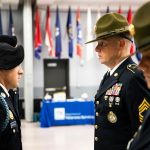In today’s fast-paced commercial landscape, businesses, especially small enterprises, are continuously in search of flexible and efficient workspaces. The conventional office setup has been gradually replaced by more dynamic and versatile spaces. In this light, commercial property owners and developers should consider optimally designing their workspaces to attract and retain these businesses. This article provides a comprehensive guide to creating flexible workspaces in commercial properties, focusing on the principles of office design, remote working, coworking spaces, and the role these play in promoting business growth and employee productivity.
Embracing the Shift Towards Flexible Office Spaces
The first step in creating a flexible workspace is understanding why it’s become such an essential asset for businesses. Today’s companies, particularly smaller ones, prioritize agility and adaptability. This desire for flexibility extends to the workspace environment. Companies need office spaces that can grow and evolve with their needs, adjusting to fluctuating team sizes, project scopes, and working styles. Traditional, rigid office environments simply don’t offer this level of adaptability.
Sujet a lire : How to Develop Efficient Parking Solutions for Residential Complexes in Dense Urban Areas?
Flexible office spaces not only help businesses to be more agile, but they also foster a more comfortable and conducive environment for employees. The provision for open areas, private offices, and meeting rooms all within the same workspace can cater to the various needs of a diverse team. By offering such versatility, your commercial property can become an attractive hub for small businesses.
Designing for Remote and Hybrid Working Models
The COVID-19 pandemic has catapulted the concept of remote working into the mainstream, with many businesses realizing that their operations can continue seamlessly even with their employees working from their homes. Even as society transitions back to normalcy, the desire for flexible working arrangements is unlikely to wane.
A lire également : How to Optimize the Use of Roof Gardens in Urban Real Estate Developments?
In designing your commercial property, consider the needs of companies that follow remote or hybrid working models. Look into providing shared desks or hot desking facilities, where employees can simply plug in their laptops and begin working. Additionally, consider incorporating private booths or quiet zones for employees to make calls or participate in virtual meetings without disturbing others.
Incorporating Coworking Spaces
Another way to design flexible workspaces in commercial properties is by integrating coworking spaces. Coworking spaces represent the epitome of flexibility, as they allow businesses to rent only the amount of space they need at any given time.
Before designing coworking spaces, understand their unique requirements. These spaces should ideally have a mix of private and open workspaces, and also communal areas like lounges or kitchens. They should foster collaboration and networking among different businesses. On the other hand, they should also respect the need for privacy and individual work.
Ensuring Employee Comfort and Productivity
A well-designed workspace can significantly boost employee productivity, creativity, and morale. It’s critical to ensure that your workspace design focuses on employee comfort and wellness.
For instance, natural light plays a vital role in employee wellness. Design office spaces with large windows to let in plenty of daylight. Ergonomics is another crucial aspect to consider. Invest in comfortable, adjustable furniture that helps in maintaining good posture and reducing musculoskeletal disorders.
Catering to the Unique Needs of Small Businesses
While designing flexible workspaces, it’s essential to consider the unique needs of small businesses. Their team size might be small, but their ambitions are big, and they need a workspace that can support their growth.
Small businesses often seek affordability without compromising on quality. By offering flexible lease terms, such as short-term contracts or pay-per-desk arrangements, you can make your commercial property more attractive to small businesses. Moreover, providing infrastructural support like high-speed internet, printing facilities, and meeting rooms can help small businesses operate smoothly without significant upfront investment.
In conclusion, designing flexible workspaces in commercial properties involves a holistic understanding of the shift towards flexibility, adapting to remote working models, creating coworking spaces, prioritizing employee comfort, and catering to the specific needs of small businesses. By doing so, you can make your commercial property a desirable destination for small businesses, ensuring a stable and diverse tenant mix for your property.
Facilitating a Collaborative Company Culture
A successful commercial property is not only defined by its physical attributes, but also by the kind of work culture it fosters. In this new era of flexible workspaces, an emphasis on collaboration and interaction is key. Companies today are increasingly recognizing the importance of a strong company culture in driving employee engagement and productivity, which in turn contributes to business success.
Designing your office space to promote a collaborative company culture can be a strategic advantage in attracting small businesses. This can involve creating communal areas for socialization and informal meetings, implementing an open-plan layout to encourage interaction among employees, or providing shared facilities that foster a sense of community.
Additionally, it is worthwhile to ensure that your commercial property is equipped with the necessary technology infrastructure to support collaboration. This can include reliable high-speed internet, state-of-the-art video conferencing facilities, and smart office technology that enhances connectivity and communication.
Above all, it is important to maintain a balance between collaboration and privacy. Not all tasks require interaction, and employees also need quiet, uninterrupted spaces for focused work. Therefore, a mix of communal and private working spaces can create a balanced and productive work environment.
Incorporating Sustainability and Wellness
A growing trend in the commercial real estate market is the focus on sustainability and wellness. Today’s businesses, especially small enterprises, are becoming more conscious about their environmental impact and the well-being of their employees. Therefore, incorporating eco-friendly practices and wellness-focused design features in your flexible workspace can increase its appeal.
To promote sustainability, consider energy-efficient lighting and heating systems, water-saving fixtures, and using sustainable materials in your office design. Incorporating green spaces, such as rooftop gardens or indoor plants, can also enhance the aesthetic appeal and air quality of your workspace.
As for wellness, ample natural light, good air quality, ergonomic furniture, and spaces dedicated to relaxation or physical activity are all factors that contribute to a healthier work environment. Institutions like the WELL Building Institute provide certification for buildings that meet specific wellness standards, which can be a valuable selling point for your commercial property.
Conclusion
The commercial real estate landscape is rapidly changing, with businesses seeking agility and adaptability in their work environment. By understanding these trends, property owners can design flexible workspaces that cater to the dynamic needs of small businesses.
Embracing the shift towards flexible office spaces, designing for remote and hybrid working models, incorporating coworking spaces, facilitating a collaborative company culture, and incorporating sustainability and wellness into the workspace are all key strategies in attracting and retaining tenants.
Creating a workspace that is not just a place to work, but also a space that fosters collaboration, promotes wellness, and respects the environment, can make your commercial property a desirable destination for small businesses. As a result, you can ensure a stable and diverse tenant mix, leading to long-term success in the competitive commercial real estate market.
















